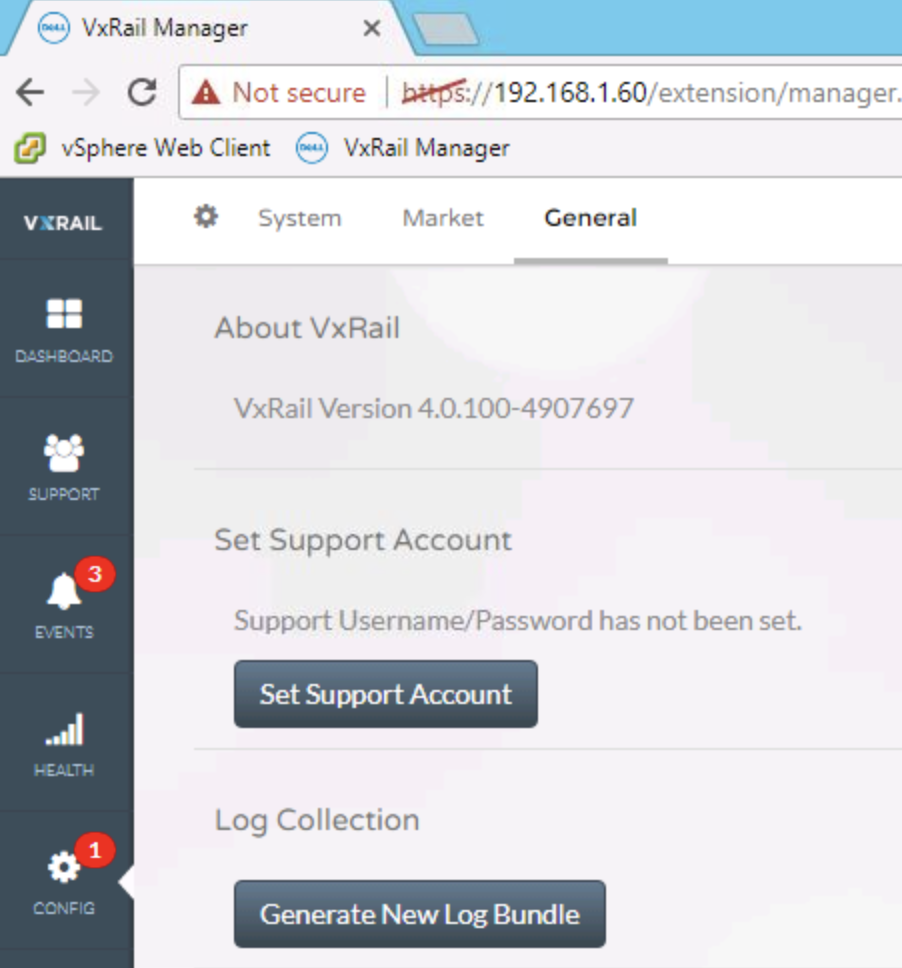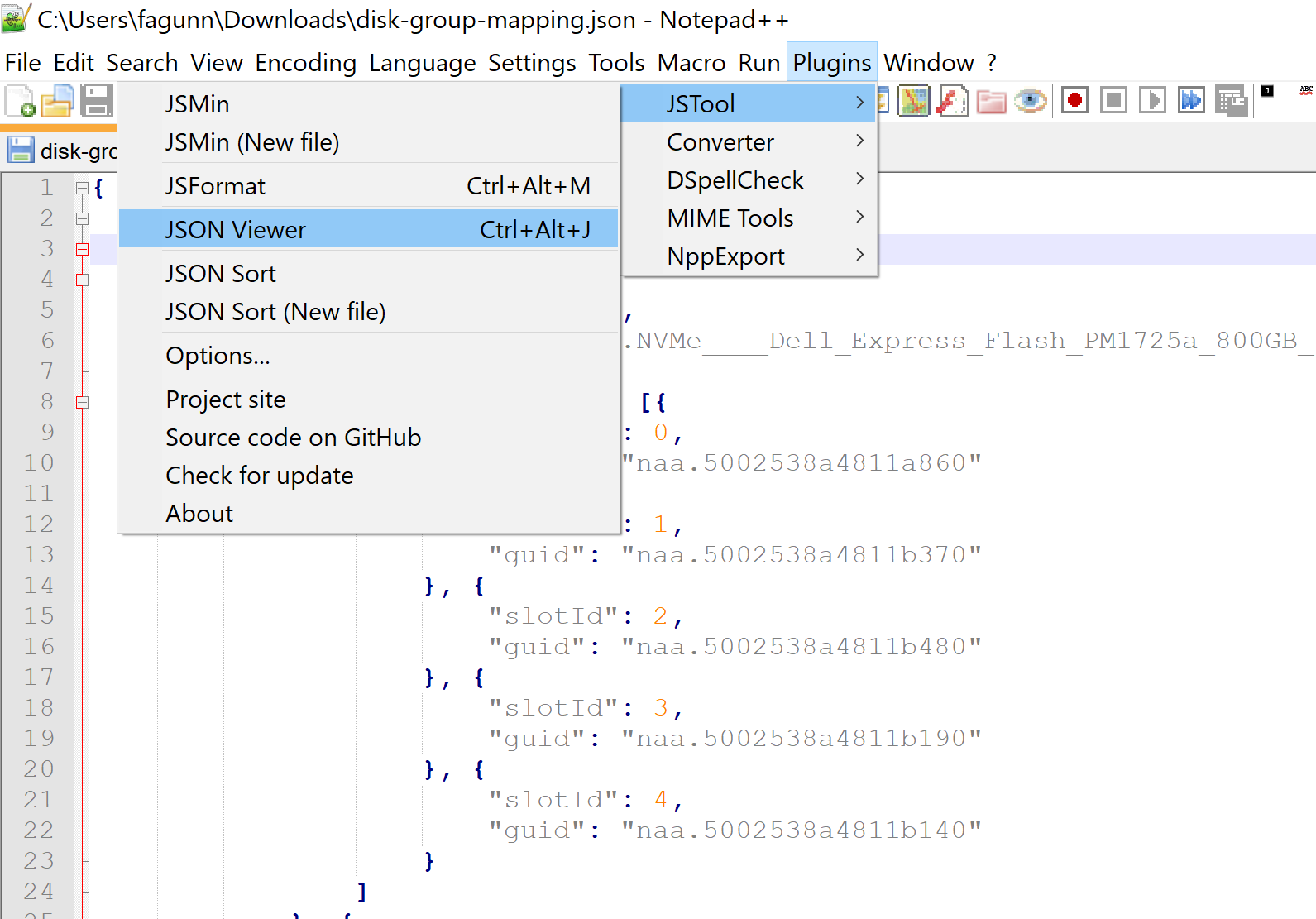I have done some digging into a way to get cluster hardware information from an existing VxRail cluster. Then with that information, find a way to easily figure out the potential capacity benefits of a drive/node upgrade. Sadly, the whole process needs to be done manually by reviewing JSON files from the VxRail Manager until I find a json file parser. But for now, I can show you how to do it by hand.
You can export the support log bundle by going to: VxRail Manager -> Config -> General -> “Generate New Log Bundle”

If you receive the log bundles, in “.\conf\vxrail\” folder, look for “config-journal.json” and “disk-group-mapping.json” files.
“config-journal.json” will tell you all the details you want to know about each node in the cluster.
“disk-group-mapping.json” will show you the disk mappings on each node, including disk modes, types and capacities etc.
Also if you are having trouble viewing the json files I would recommending using Notepad++ with a json reader plugin.
You can download Notepad++ here (make sure to use the 32bit one). Then download the JSToolNpp plugin .dll for notepad here. After you get Notepad++ installed and the plugin downloaded you can install the plugin by:
- Placing the dll in the plugins subfolder of the Notepad++ install folder;
- Notepad++ loads plugins at startup. To load a new plugin, you can either close and restart Notepad++, or use the Settings -> Import -> Import plugin command.
The latter will copy the dll in the plugin folder if it is not already there. Then close and re-open Notepad++.

After you know what drives are in the cluster you can add up the existing raw capacity plus the additional raw capacity of a drive (or node) upgrade. After you have the new raw capacity of the cluster you can use the rules of thumb bellow to get a good idea of what the new usable capacity of the cluster will be (note that it is hard to predict without knowing the details about each what storage policy’s are being used). The general guidelines for calculating the usable capacity from the clusters raw capacity is:
Mirror (FTT =1) — 50% of total new raw capacity
Mirror (FTT = 2) — 33% of total new raw capacity
EC (FTT = 1, Raid 5 3+1) — 75% of total new raw capacity
EC (FTT =2, Raid 6 4+2) — 66% of total new raw capacity
Please be advised that those policies could be mixed, if so calculate the estimates proportionally. Also, make sure to account for the 20% additional overhead needed for vSAN after the fact.
If dedup and compression is enabled, there is no effective way to presume how much usable capacity they could get. One workaround is to check their current space saving ratio in the vSAN tab in vCenter, and use that as a baseline.